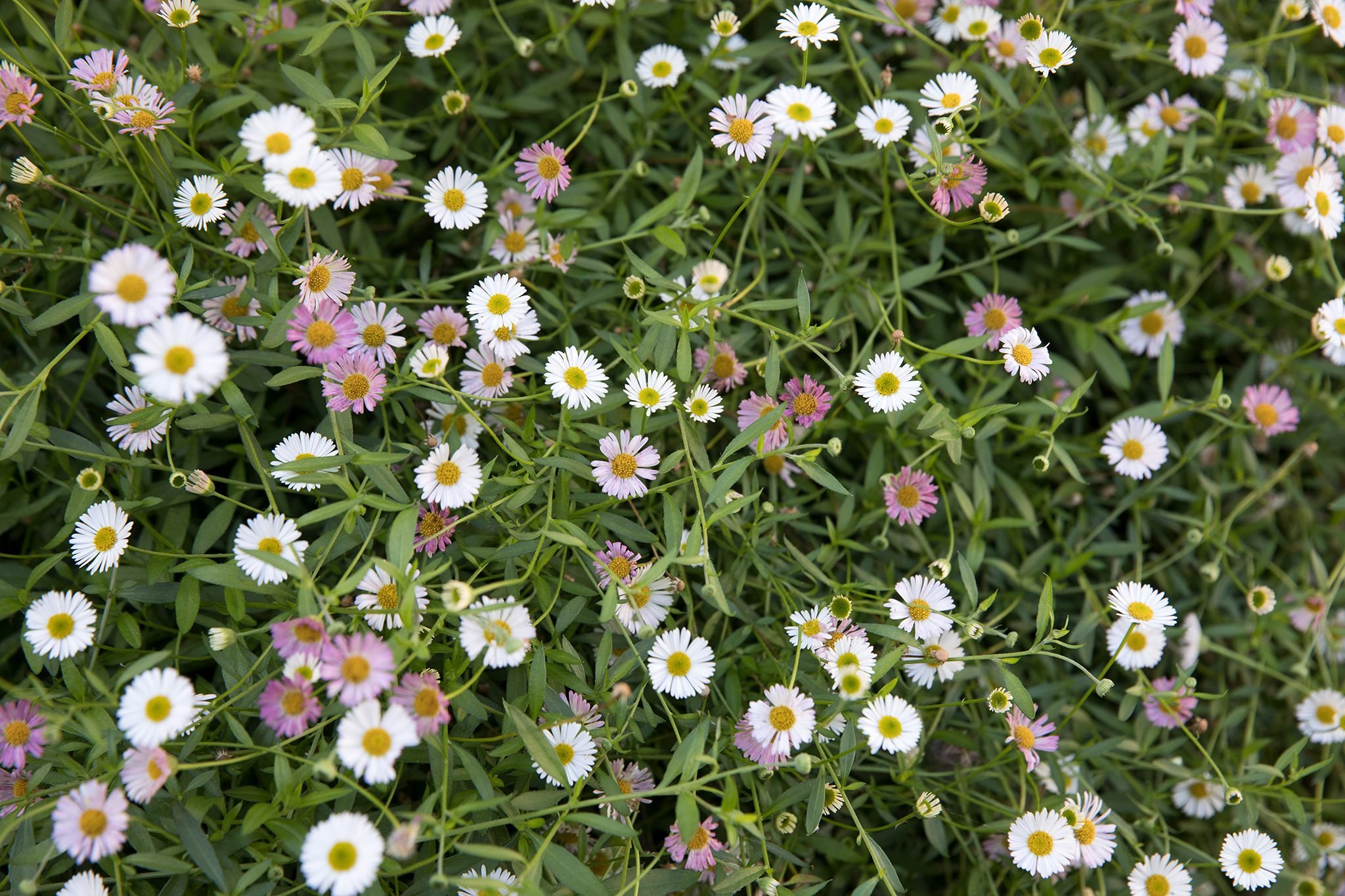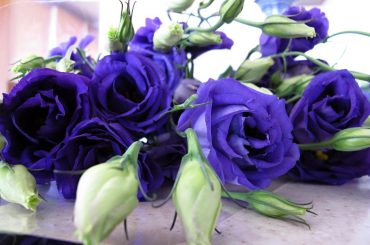Table of Contents
These versatile Mexican-origin plants Erigeron Karvinskianus have so many uses, and they are a great choice for rock gardens, borders, edging, and hanging baskets.
This is because of its compact growth habit and ability to cover walls and any given space. Erigeron Karvinskianus is commonly known as Mexican Fleabane, and these plants are native to Central America, Colombia, and Venezuela. But now they are grown worldwide because of their beautiful daisy-like flowering.
These shrubs are ideal for making your garden look extraordinary. In this article, we have mentioned all the tips and tricks to solve your query about how to grow Erigeron Karvinskianus ‘Mexican Fleabane.’
However, these perennial shrubs do not require much of your attention, and their ability to self-seeding can help you have plants on their own without much of your hassle. This plant comes in a variety of colours to make your space look beautiful and vibrant.
How to Grow Erigeron Karvinskianus ‘Mexican Fleabane’
These beautiful shrubs are easy to grow and take care of. So you don’t have to worry about it, but there are some different methods to grow Erigeron karvinskianus. Also, they can grow in any soil, in pockets of stone walls, and in paving crevices. These tiny shrubs are ideal for growing in containers and small areas. Below we have mentioned different methods of growing Erigeron.
1. Growing From Seed
This is the easiest way to grow Mexican fleabane because these beautiful plants have self-seeding characteristics. After the flower fades, they produce fluffy seeds that propagate through the wind. Apart from that, you can buy the seeds and sow them directly to the desired location to grow in the spring. You need to scatter the seeds in the soil, gravel, stones, or any desired area. The seeds need to be sown in March or April.
Furthermore, the germination would only take 2-3 weeks when the roots start to begin. Moreover, there is one more way where you can coat the seeds with a small amount of clay and press them into the gaps in the walls. This will help them to grow and spread over the vertical surface from there.
2. Growing From Division
Erigeron can be propagated through division, and this method involves establishing plants into smaller sections with their own roots. All you need to do is dig up the soil and plant carefully. The clumps should be divided into smaller sections, ensuring that each division has healthy roots and foliage.
3. Growing From Cuttings
Another way of growing Mexican fleabane is through stem cuttings. Take 3-4 inch long cuttings from a healthy plant that is non-flowering. Remove the lower leaves, dip the cut end in a rooting hormone, and then plant the cutting in a well-draining potting mix. Furthermore, place the pot in a warm and bright location and then water the cuttings regularly. Soon you will notice roots developing which is then be able to plant in the soil.
How to Care For Karvinskianus ‘Mexican Fleabane’
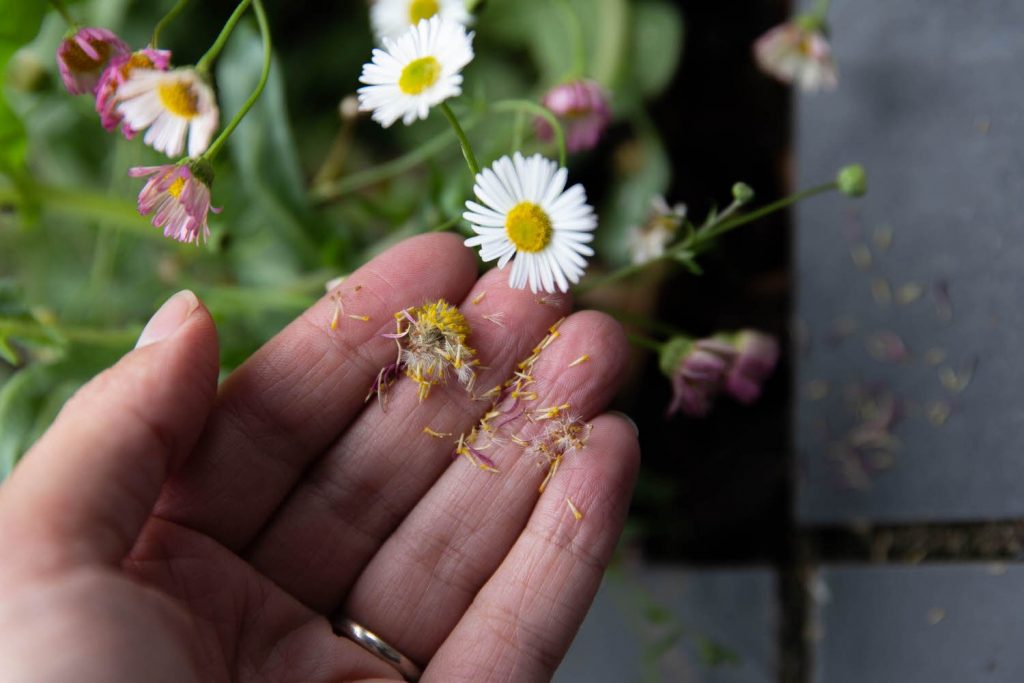
These plants are easy to grow when grown in a suitable spot, and these beautiful plants are trouble-free. It is well-known for being drought tolerant and also lasts longer in your garden. It requires plenty of sun and well-drained soil to thrive in its growth. Below we have mentioned some tips and tricks to take care of this Mexican Fleabane.
1. Light
Although Erigeron prefers plenty of light, however, it can also grow in partial shade, but there can be very less flowering compared to the plant placed in a sunny position. Also, it grows well in arid conditions.
2. Soil
This plant can grow in any condition, but it requires fertile and well-drained soil to have healthy growth. However, Erigeron is robust. Therefore, it can do well in rock gardens and paving cracks. These shrubs are pretty low maintenance and preferred by several gardeners.
3. Water
Mexican Fleabane is well-known for being drought tolerant. However, while growing, they need regular watering as they have to develop their roots. Also, this is an essential step during summer because the soil should not be left dry for a longer period. However, it would be best if you did not overwater the roots as it can cause waterlogging and then rotting of the roots.
4. Temperature & Humidity
Erigeron karvinskianus is a hardy perennial plant, and surprisingly it does well in warmer climates. It is not a fan of extreme temperatures or damp winters. However, in these temperatures, Erigeron’s health can be benefitted from dry mulching during the winter. Further, in dry months well-drained conditions or soil will be vital.
5. Fertiliser
Feeding this plant is not usually necessary as it is quite self-sufficient. However, there can be certain situations when the growth can seem weak. If you see that your shrub is not flowering well, then you can provide organic liquid fertiliser, which can be used every month or in the spring and summer seasons.
6. Pruning
Removing the deadhead stems can promote a long flowering period. During the autumn season, if the plants look shabby and not standing firmly. Then you can cut back the stems to just above the ground. This is the case when the plant does not die back naturally.
Different Types of Erigeron Karvinskianus
Mexican Fleabane has a few recognized varieties or cultivars that can indeed upgrade the look of your garden. However, we have mentioned some notable types of Erigeron varieties:
1. Erigeron Karvinskianus ‘Profusion’
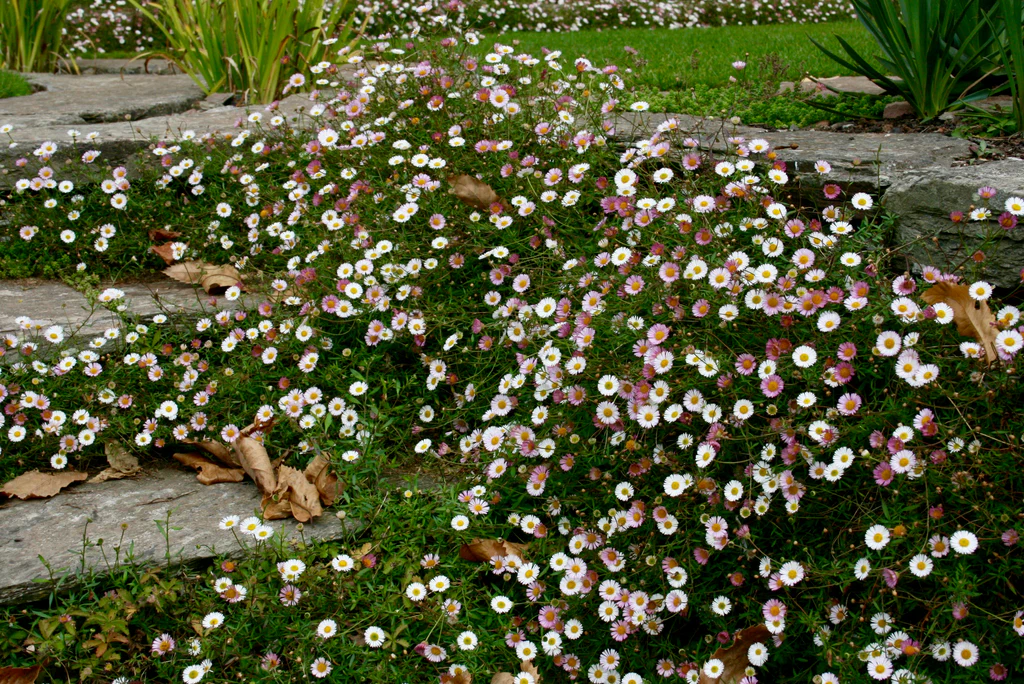
This variety of Erigeron is well-known for its profuse flowering as they produce a large number of flowers as compared to other species. It has the same white petals with yellow centres but gradually turns pink as they age. This variety of flowers can fill the empty space of your garden with beautiful bright flowers.
2. Erigeron Karvinskianus ‘Lavender Lady’
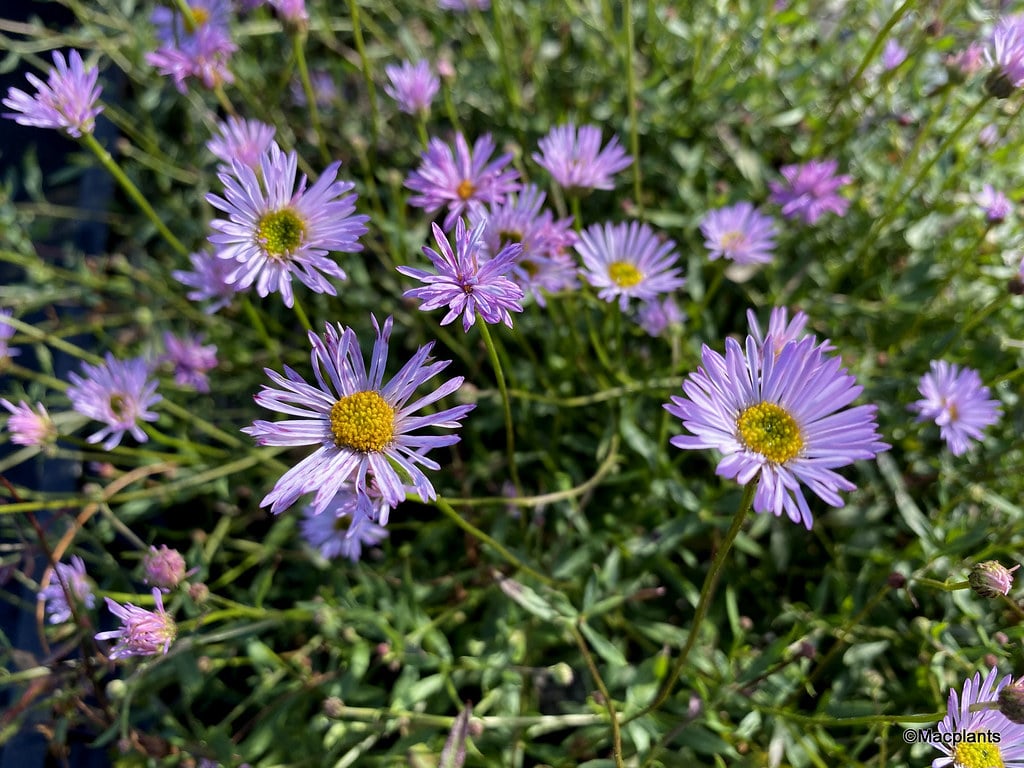
This cultivar features lavender or light purple flowers instead of the usual white flowers. It adds a subtle colour to your garden or its space. This colour brings a soothing tone to wherever it is placed in.
3. Erigeron Karvinskianus ‘Aureus’
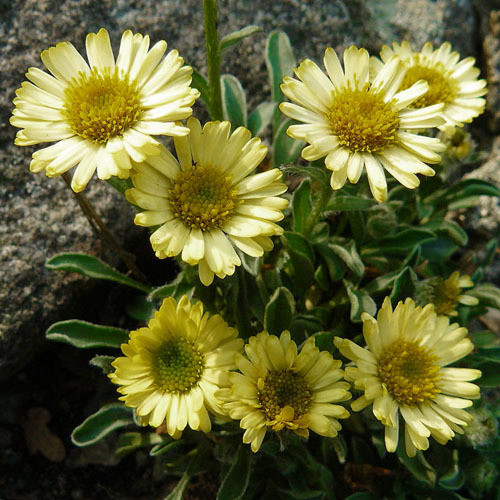
This variety has unique bright golden-yellow foliage, and the leaves have this hue throughout the season. Thus it provides extra vibrance to the plant with white or pink flowering. ‘Aureus’ adds a splash of colour and interest to any garden setting.
4. Erigeron Karvinskianus ‘Stallone’
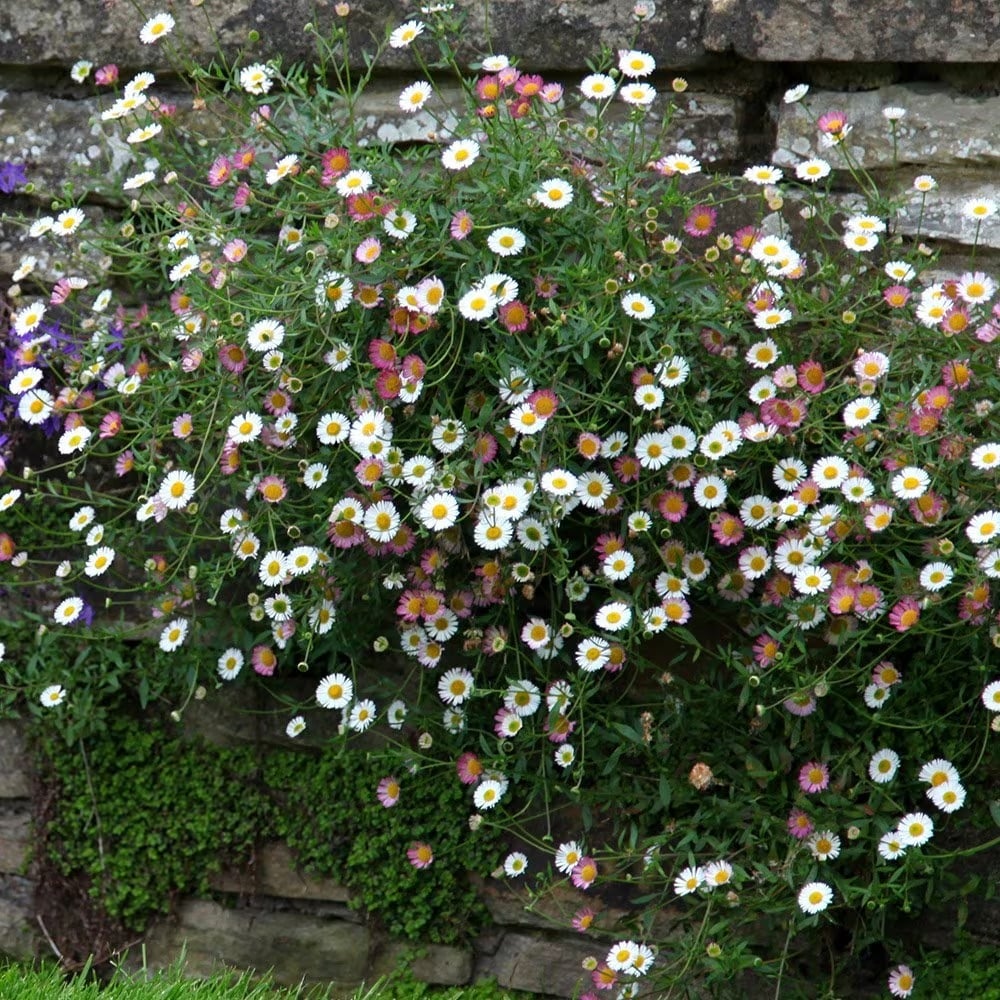
Stallone is a compact version of Mexican Fleabane. Moreover, it stays compact and mounded. Therefore, it is an ideal choice for growing in pots or containers. This is because it produces an abundance of flowering that is good for display.
The varieties of plants depend on the region and local nurseries as well. However, we have mentioned the most common types of Erigeron.
Other Plants that Grow Well with Mexican Fleabane
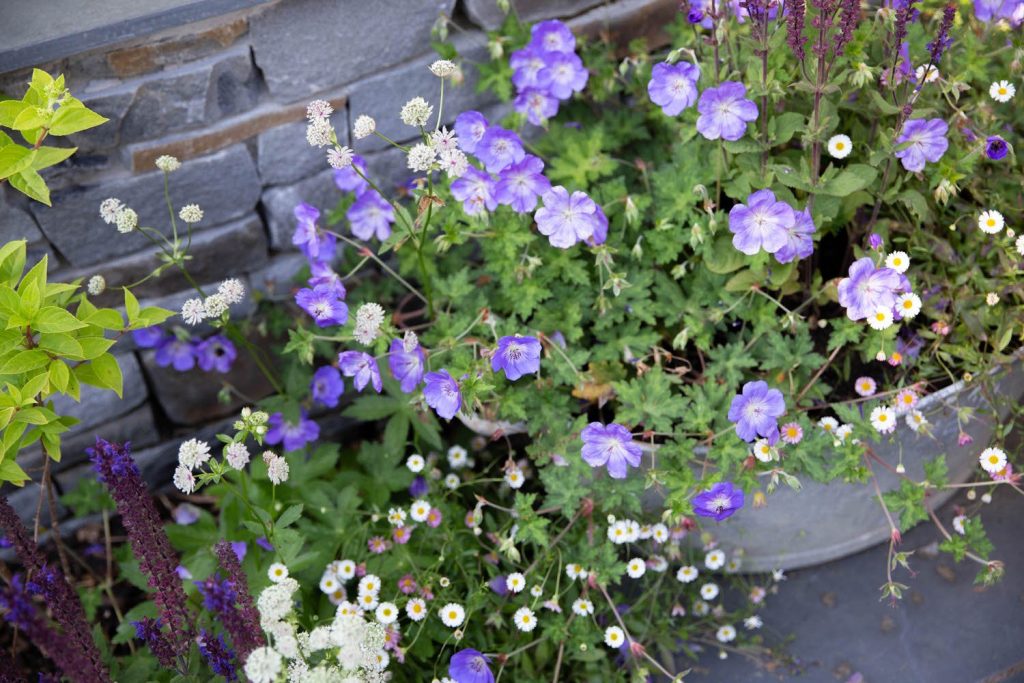
Erigeron Karvinskianus can be paired with different varieties of plants that complement its growth and even add beauty to a particular area. We have mentioned some plants that work well with Erigeron.
- Lavender: This strong-smelling purple hue lavender calms the surrounding wherever it is planted. Moreover, it harmonises beautifully with Mexican Fleabane. The white and pink blossoms blend well with the purple hues of lavender. These plants prefer similar growing conditions.
- Rosemary: Rosemary has aromatic foliage and delicate blue flowers, which create an attractive contrast when grown with Mexican Fleabane. Both these plants thrive in sunny locations and require well-drained soil.
- Sedum: Succulent sedum varieties can be excellent companion plants to grow with Erigeron shrubs. Sedum spurium and Sedum reflexum are the two varieties that can go well with these plants. They are low maintenance and have fleshy foliage that looks well with the bright flowers of Mexican Fleabane and also will add texture to the plant.
- Geraniums: Hardy geraniums have beautiful bright flowers that will definitely complement these perennial shrubs. However, it would be best if you chose the varieties that have similar height ranges to the Mexican Fleabane.
- Verbena: Verbena’s profusion of flowers has varieties of colour ranges that will create a vibrant contrast with Mexican Fleabane. Also, they have a similar preference for well-drained soil and a sunny location to thrive.
- Dianthus: Dianthus has a compact growth habit and charming Flowers. Moreover, the flowers of this plant are known as Pinks, that work well alongside Mexican Fleabane. Dianthus has shorter stature and bright, colourful blooms that add a delightful touch to the garden.
- Creeping Thyme: Creeping Thyme has low growth and can spread. Thus, it complements Mexican Fleabane’s cascading growth. Furthermore, both plants appreciate full sun and well-drained soil to have healthy growth.
- Alyssum: The delicate, fragrant flowers of Alyssum create a beautiful carpet of flowers with vibrant colours alongside Erigeron karvinskianus. These plants have low growth and thrive in full sun. Therefore, they go well with each other in any garden.
Summing It Up
If you are planning to have a companion with these shrubs, then you need to keep in mind to provide specific requirements for each plant. This includes all the basic necessities such as sunlight, type of soil, and water.
Also, if the plant needs external feeding is to be taken care of. However, now you have all the basic knowledge to grow Erigeron Karvinskianus ‘Mexican Fleabane.’ All you need to do is that you have to pick your gardening equipment and plant these beautiful shrubs in your garden.
Moreover, the best quality of these flowering plants is that they do not require much attention and also are pest free. However, they do not grow very tall. The maximum height that they can reach in a healthy environment is 15-30 cm. But they do provide clusters of flowers, so these flowering plants can quickly fill the empty space in your garden.
So, plant these after the fall and have a beautiful garden in spring and summer.

